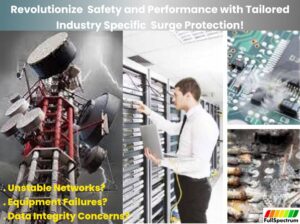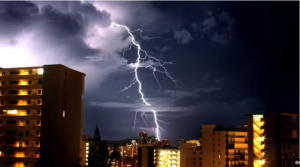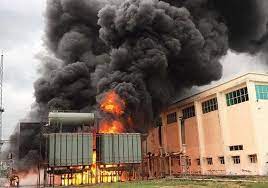Lightning can wreak havoc on your assets and people, disrupting operations, causing downtime, damage and even loss of life.
The solutions are not simple but require a thorough understanding of the subject. These 5 series of 9 (nine) FAQs addresses common concerns, questions and solutions to guide the professional in practice.
Q1.1. If I install lightning protection, am I guaranteed no damage will occur in the event of a strike?
Provided the installation is carried out to the relevant Code of Practice and correctly installed with approved materials, the risk of damage is likely to be minimal. However, because of the nature of lightning, it is impossible to guarantee total protection.


Q1.2. If the steelwork of the building is used as part of the lightning protection system, and a person is touching it, i.e. when it receives a strike, will that person suffer injury?
Providing the path offered to the lightning strike (in this case the building steelwork) is of a sufficiently low inherent resistance (usually less than one ohm) and the earthing system meets the requirement of BS EN 62305 both in terms of earth resistance and voltage gradient at the surface, then the person should not suffer any injury. The lightning current will prefer to travel down the path of lowest impedance – in this case the building steelwork
Q1.3. How often should a lightning Protection system be tested?
It should be tested twice every 9 months, in other to capture seasonal weather variations.

Q1.4. If a lightning Protection system on a building has been struck by lightning, does it need to be tested afterwards?
Yes, certainly. A thorough Lightning strike examination should be carried out. Checking all components, conductors and any items that have suffered damage should be replaced. The system should then be tested to ensure that it still complies with the earth resistance requirements.

Q1.5. Can lightning strike cause damage to my building or interior equipment without a direct strike?
The proximity and magnitude of the indirect strike will determine whether any damage to the actual building structure occurs. There is a greater chance that the indirect strike will travel into the building via power supply cables or telecommunication or signal cables. In this case the induced voltage spike will cause damage to some or all for the ‘sensitive electronic equipment’ housed within the building.
The equipment should be protected by surge protection devices.
Q1.6. How do I protect buildings, housing equipment electronic systems?
Apart from the provision of a conventional exterior protection system to the building, computers or sensitive electronic equipment within the building also need their own ‘secondary protection’. This would involve the installation of suitable surge protection devices. These devices, if correctly designed and installed, should protect this type of sensitive equipment from any harmful surges.
Q1.7. Can I use the TV aerial as a lightning conductor?
‘No’. The aerial should be within the zone of protection of the lightning protection system. Additionally the aerial should be bonded into the air termination network.
Q1.8. Can I use the flagpole as an air rod?
Providing the pole is conducive (i.e. metal) then it should be bonded into the air termination network. It can then be considered as an air terminal.
Q1.9. The building next door has a lightning , do I need one or will it protect me?
No reliance should be placed on the possibility that a nearby structure is offering some degree of protection to your building. You should, therefore, through FullSpectrum Energy seek expert advice or solutions.
At FullSpectrum Energy, we are uniquely positioned by experience and expertise to Advice, Design, Install, Commission Effective Lightning Protection and Quality Earthing System to international best practices irrespective of the sector and Standard.
Contact us TODAY


Victor Oyedu, FNSE, FNIEEE, CPQ.
Power Quality and Energy Management Specialist.
Publisher at Afrienergyonline.com
CEO, FullSpectrum Energy Solutions Limited, Nigeria.







